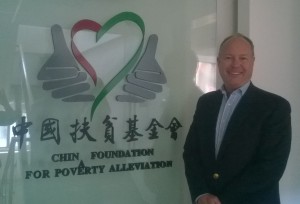 China is in transition. It’s a political economy where politics and business are inextricably linked. There is a momentous shift occurring and it can be unsettling. The economy is downshifting to a much slower growth rate. Most economies go through growth and constriction, but China has had 34 years of continuous growth. China will still have growth of 3 to 5 percent so it is a soft fall. There has been a constant flow of people from rural areas to existing and new cities. In 1990, 25% of Chinese lived in urban areas. In 2013 that number was 53%. While this has contributed to the rise in productivity levels, the economic slowdown will cause an increase in poverty in the cities. Small and medium sized enterprises (SME’s) make up 50% of the GDP and employ 80% of the workers and there are good, solid business laws in place, they just aren’t widely implemented. China is looking to reform financial markets, with an emphasis towards innovation and access to markets. We must remember that in 2000, when China joined the World Trade Organization, they comprised just 1% of the world’s economy. In 2014 it is 15% and continues to rise.
China is in transition. It’s a political economy where politics and business are inextricably linked. There is a momentous shift occurring and it can be unsettling. The economy is downshifting to a much slower growth rate. Most economies go through growth and constriction, but China has had 34 years of continuous growth. China will still have growth of 3 to 5 percent so it is a soft fall. There has been a constant flow of people from rural areas to existing and new cities. In 1990, 25% of Chinese lived in urban areas. In 2013 that number was 53%. While this has contributed to the rise in productivity levels, the economic slowdown will cause an increase in poverty in the cities. Small and medium sized enterprises (SME’s) make up 50% of the GDP and employ 80% of the workers and there are good, solid business laws in place, they just aren’t widely implemented. China is looking to reform financial markets, with an emphasis towards innovation and access to markets. We must remember that in 2000, when China joined the World Trade Organization, they comprised just 1% of the world’s economy. In 2014 it is 15% and continues to rise.
Corruption is a huge problem and it is being addressed selectively. Examples are being made of companies as a warning to others. Often these examples are of common practices and could be considered minor, but as the old Chinese saying goes: “kill the chicken to scare the monkey.” China is a very competitive market between Chinese companies and then when you introduce multinational corporations it can become fierce.
This was the economic picture painted last week at The Conference Board’s Global Social Investing Council meeting in Beijing of which I attended. The meeting was a four days deep dive into the business climate, its opportunities and challenges. A look at the social sector including its structure, organizations, capacity and trends and how businesses are and can create shared value.
Often, nonprofit organizations are called Non-Governmental Organizations or NGOs. It’s a bit more complicated in China as most of the large NGOs are either government entities or are affiliated with the government. An example is the Chinese Red Cross. There is a term for these groups. GONGOS: Government Organized Non-Governmental Organizations. More than 50% of donations go to GONGOS. The other NGOs are either registered as nonprofits, are registered as businesses or are not registered. Nonprofit status is challenging to acquire, so many register as businesses, or if their cause is viewed as controversial, it is most likely not registered at all. Then there are foundations, with the first one being formed in 1981. There are almost 4,000 foundations, a mix of private and public, with combined assets valued about equal to the Ford Foundation in the United States. Approximately 1,600 of these foundations work in education. The Ministry of Civil Affairs was formed in 1978 to oversee and foster the development of the social sector.
There is a great social demand for the services provided by NGOs, yet less than 1% of GDP goes to NGOs. The lack of supply is both problematic and an opportunity for businesses. Issues such as the environment and food safety are hot buttons and could spark civil unrest much more so than economic issues. The big three government priorities are education, poverty alleviation and medical care. Sixty-seven percent of domestic giving goes to these three. Currently 150 million people live on US$1.00, or less, a day. Unfortunately good data is not readily available. What is out there is often not of good quality and is only telling a portion of the story. Better data would help NGOs make a bigger impact with more positive outcomes.
During the four days we gained insight into the CSR, philanthropy and employee engagement initiatives of several companies including The Ford Motor Company, HSBC, United Technologies, Medtronic, FedEx, P&G, Caterpillar, PwC, Intel, KPMG and Johnson & Johnson. These companies have been in China for many years and have highly evolved corporate responsibility programs with some having solid philanthropic activities. As more companies set up operations in China, often their CSR strategy is an afterthought as they are trying to get their business strategy right. I would offer that the CSR strategy should be an overall part of the business strategy and that they will probably do better financially if they have a strong sense of integrity as part of their plan. And while I think a global philanthropic strategy is critical, it must be relevant on the ground. And with China, you can’t look at a China strategy, you need to look at regions, cultural differences, dialects and the issues specific to these differences.
 I was pleased to see the strong growth of employee volunteering. Not just the traditional activities of planting trees and filling a backpack, but of skills based activities. Helping NGOs be more effective at meeting their mission. This is critical as there are not the capacity building organizations to help nonprofits grow that we see in many parts of the world. As China is a Confucian based society based of meritocracy, volunteering and other giving programs are adding “heart.” Plus volunteering is a window into the issues.
I was pleased to see the strong growth of employee volunteering. Not just the traditional activities of planting trees and filling a backpack, but of skills based activities. Helping NGOs be more effective at meeting their mission. This is critical as there are not the capacity building organizations to help nonprofits grow that we see in many parts of the world. As China is a Confucian based society based of meritocracy, volunteering and other giving programs are adding “heart.” Plus volunteering is a window into the issues.
With climate change comes more natural disasters such as strong storms and floods. There has been a strong effort by government business and NGOs working together around preparedness. In many schools there is teacher training and guides with handbooks for the students to take home and share. And when disasters do occur, such as the Sichuan earthquake, the Ministry of Civil Affairs Department of Disaster Relief oversees aid and reconstruction projects. Three million volunteers responded to the Sichuan earthquake.
With so many new billionaires in China, we followed the much publicized visit by Bill Gates and Warren Buffet to gain new signers to the Giving Pledge. They did not see the level of interest that they had hoped. There is an organization of wealthy individuals that is helping to target funding specifically toward environmental issues. There also has been an increase of individual donations primarily through the internet. One huge challenge to individual giving is the tax issue. Unless you are giving to a GONGO or one of the relatively few registered charities, the donations is taxed as many NGOs are registered as businesses.
During the term of Hu Jintao, we often heard about the Harmonious Society initiative. While still in place, it seems to have been supplanted by Xi Jinping with China Dream: Smart, inclusive and sustainable. It’s not just about material things but truly China’s place on the world stage. A place where people’s basic needs are being met. China has a renewed confidence in its view.
China’s emergence in the foreign aid world has been groundbreaking. Giving without conditions. The aid is coming from both the government and NGOS and is primarily going to other parts of Asia and to Africa. While the giving is not a significant part of the GDP, it is not popular amongst citizens as the feeling is that the money should stay in China to address their own needs.
 We heard from, and learned about important resources and initiatives from The Asia Foundation, Give2Asia, China Foundation Center, China Development Brief, HandsOn China, Narada Foundation, China Youth Development Foundation, China Youth Development Foundation, China Catalyst, and the Nonprofit Incubator amongst others. There are some innovation programs occurring both with capacity building and with microfinance. For instance, Badi Foundation has an institutional capacity building program in rural and semi-rural areas where they identify people with an aspiration to serve, train them for three months and then help them establish a community based organization including providing seed money.
We heard from, and learned about important resources and initiatives from The Asia Foundation, Give2Asia, China Foundation Center, China Development Brief, HandsOn China, Narada Foundation, China Youth Development Foundation, China Youth Development Foundation, China Catalyst, and the Nonprofit Incubator amongst others. There are some innovation programs occurring both with capacity building and with microfinance. For instance, Badi Foundation has an institutional capacity building program in rural and semi-rural areas where they identify people with an aspiration to serve, train them for three months and then help them establish a community based organization including providing seed money.
More educational institutions are investing in this work. An example is the China Philanthropy Research Institute at Beijing Normal University. The Institute is world renowned and led by Wang Zhenyao, a 20 year veteran of the Ministry of Civil Affairs. There he was director of Disaster Relief and then Social Work. He is renowned for his strong support of philanthropic organizations and advocacy for participation of the public in charitable initiatives.
Social enterprises are beginning to form. Microfinance is helping to raise people out of poverty, providing income and stimulating rural economies. More Chinese companies are learning the concept of shared value and corporate social responsibility. Volunteering is on the rise. Multi-National Companies doing business in China are directing efforts focused on critical issues such as the environment and education. While the concepts of philanthropy, volunteering and corporate citizenship are newer to China than many countries, and despite the obstacles, the dramatic growth of the civil sector is both exciting to watch and will be an important component to achieving China’s Dream.
http://www.conference-board.org/regions/region.cfm?regionid=90
http://www.handsonchina.org/
http://en.foundationcenter.org.cn/
